Tank
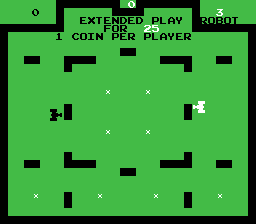 The Game: Two players each control a fearsome armored fighting vehicle on a field of battle littered with obstacles. The two tanks pursue each other around the screen, trying to line up the perfect shot without also presenting a perfect target if they miss. In accordance with the laws of ballistics and mass in the universe of Saturday morning cartoons, a tank hit by enemy fire is bounced around the screen, into nearby wall or mines, spinning at a very silly velocity, and battle begins anew. (Kee Games [Atari], 1974)
The Game: Two players each control a fearsome armored fighting vehicle on a field of battle littered with obstacles. The two tanks pursue each other around the screen, trying to line up the perfect shot without also presenting a perfect target if they miss. In accordance with the laws of ballistics and mass in the universe of Saturday morning cartoons, a tank hit by enemy fire is bounced around the screen, into nearby wall or mines, spinning at a very silly velocity, and battle begins anew. (Kee Games [Atari], 1974)
Memories: In the early 1970s, arcade distribution was a closely-guarded, exclusive thing. And to an ambitious guy like Atari founder Nolan Bushnell, this represented a problem. Atari wasn’t an old-school pinball outfit like D. Gottlieb & Co. or Bally, and was bucking the system just to land a deal with regional distributors across the country anyway. The distribution system – which allowed one distributor to represent Gottlieb games exclusively in his area, while a competitor would be the only game in town for Bally/Midway fare, for example – was created in the pinball era; many arcade operators would deal exclusively with a single distributor, and of course there were franchise arcades owned by companies like Bally, such as Aladdin’s Castle. It was entirely possible, and not uncommon, to see some manufacturers represented only at one or two arcades in a given area, and their rivals represented only at others. Which was fine with pinball manufacturers, but Bushnell wanted to place Atari’s video games everywhere. [read more]

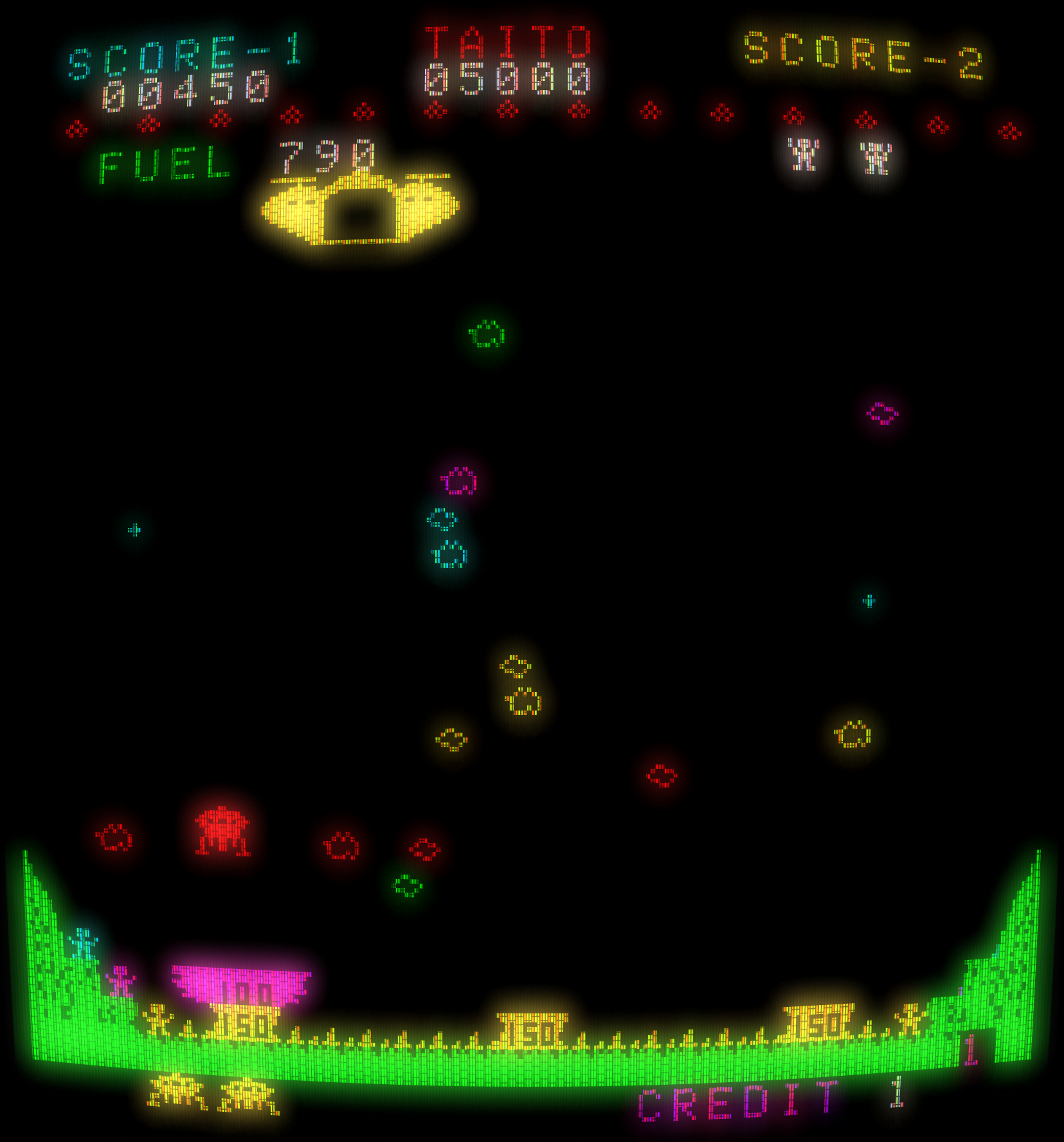


 The Game: Pull the plunger back and fire the ball into play. The more bumpers it hits, the more points you rack up. But don’t let the ball leave the table – doing so three times ends the game. (Atari, 1979)
The Game: Pull the plunger back and fire the ball into play. The more bumpers it hits, the more points you rack up. But don’t let the ball leave the table – doing so three times ends the game. (Atari, 1979) The Game: Play ball! Two teams play until they each accumulate three “outs” per inning. Try to hit the ball out of the park, or confound the outfielders with a well-placed hit none of them can catch. Steal a base if you’re feeling really brave – and then try to cover your bases as best you can when the other player tries all of these same strategies on you. (Mattel Electronics, 1979)
The Game: Play ball! Two teams play until they each accumulate three “outs” per inning. Try to hit the ball out of the park, or confound the outfielders with a well-placed hit none of them can catch. Steal a base if you’re feeling really brave – and then try to cover your bases as best you can when the other player tries all of these same strategies on you. (Mattel Electronics, 1979)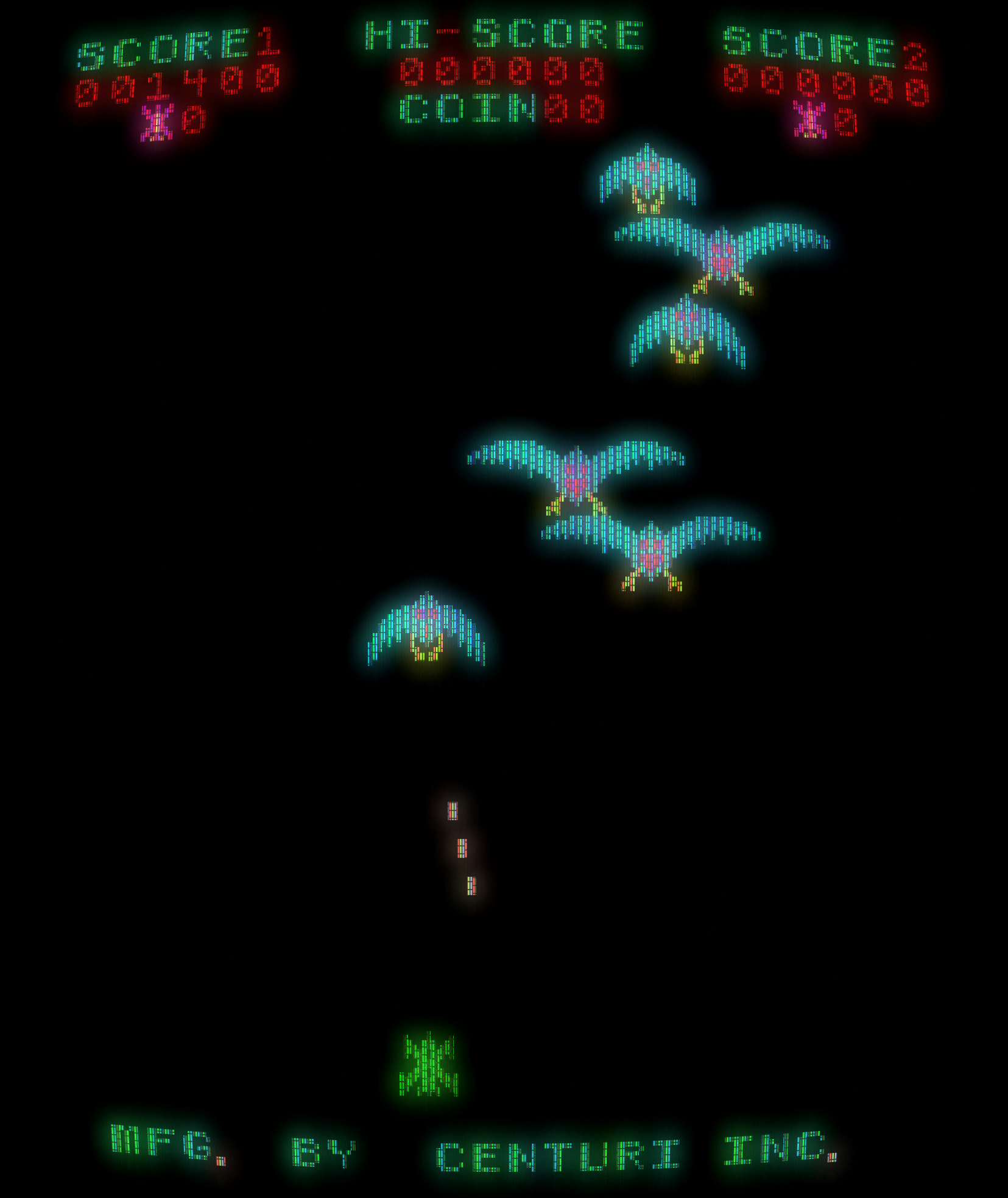
 The Game: In a heavily armed space fighter, your job is pretty simple – ward off wave after wave of bird-like advance fighters and Phoenix creatures until you get to the mothership, and then try to blow that to smithereens. All of which would be simple if not for the aliens’ unpredictable kamikaze dive-bombing patterns. The
The Game: In a heavily armed space fighter, your job is pretty simple – ward off wave after wave of bird-like advance fighters and Phoenix creatures until you get to the mothership, and then try to blow that to smithereens. All of which would be simple if not for the aliens’ unpredictable kamikaze dive-bombing patterns. The 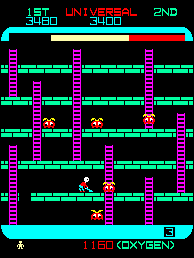 The Game: An astronaut is trapped in an enclosed, vertical space with aliens who have a taste for human flesh. With his oxygen supply running out, he must dig holes in the floors of the multi-level structure and lure the aliens into those holes, which gives him mere seconds to dispose of the trapped aliens by filling the holes in. Clearing a level of aliens replenishes the oxygen tank and deposits the player on a new screen full of aliens, some of whom require extra effort – namely, the carefully-planned digging of an entire vertical shaft to fall through – to kill. (Universal, 1980)
The Game: An astronaut is trapped in an enclosed, vertical space with aliens who have a taste for human flesh. With his oxygen supply running out, he must dig holes in the floors of the multi-level structure and lure the aliens into those holes, which gives him mere seconds to dispose of the trapped aliens by filling the holes in. Clearing a level of aliens replenishes the oxygen tank and deposits the player on a new screen full of aliens, some of whom require extra effort – namely, the carefully-planned digging of an entire vertical shaft to fall through – to kill. (Universal, 1980)
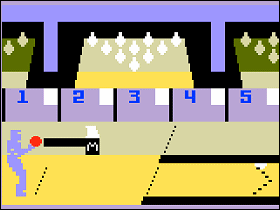
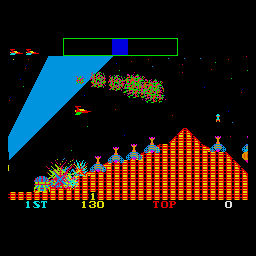 The Game: You pilot a space fighter, bombing and blasting away at enemy ground installations, ships, and missiles. Strafe away! (Universal, 1981)
The Game: You pilot a space fighter, bombing and blasting away at enemy ground installations, ships, and missiles. Strafe away! (Universal, 1981) The Game: In an exceedingly abstract and addictive game, you are a marker, trying to claim as much of the playing field as you can by enclosing areas of it. Drawing your boundaries faster is safer, but yields fewer points. A slower draw, which leaves you vulnerable to attack from the Qix and the Sparx, gives you many more points
The Game: In an exceedingly abstract and addictive game, you are a marker, trying to claim as much of the playing field as you can by enclosing areas of it. Drawing your boundaries faster is safer, but yields fewer points. A slower draw, which leaves you vulnerable to attack from the Qix and the Sparx, gives you many more points